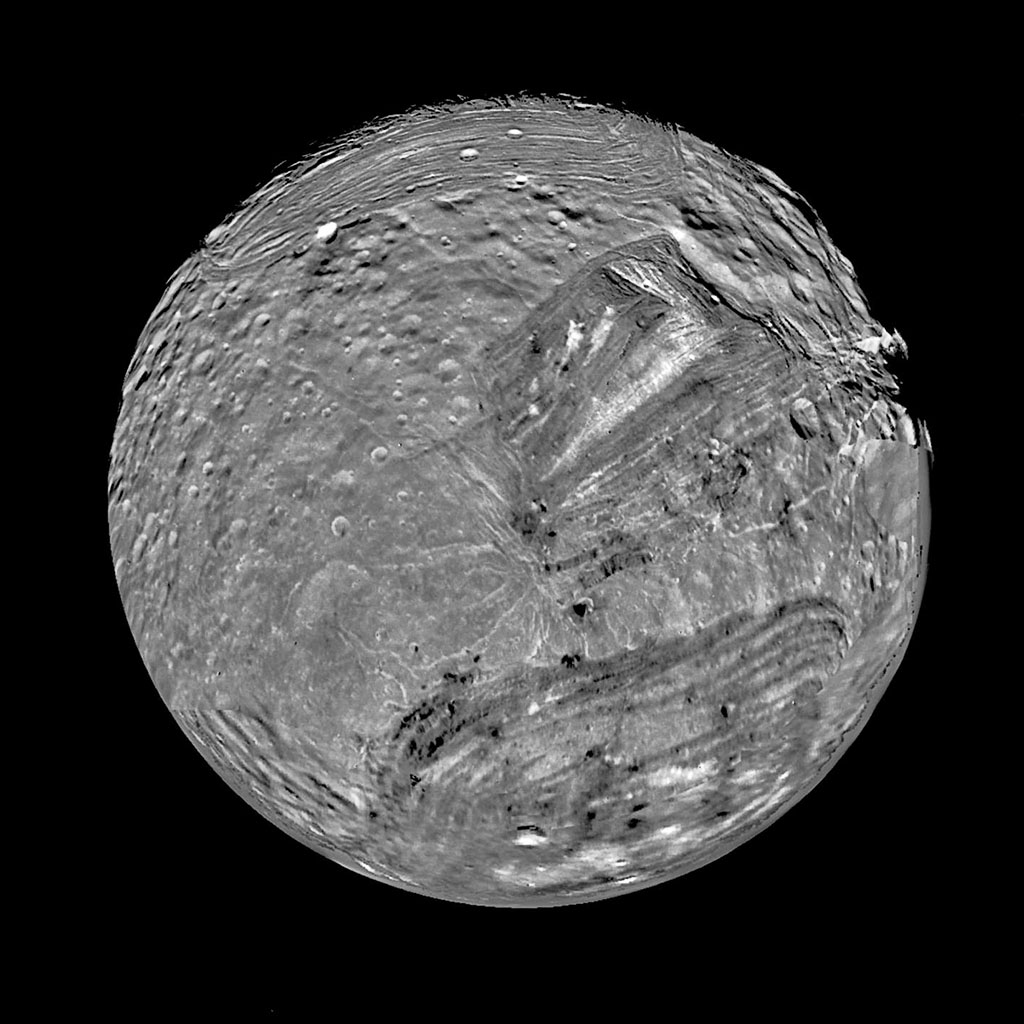Miranda, a moon of Uranus
80,716 miles
298 miles
Miranda is the fifth smallest moon of Uranus and also the fifth moon to be discovered in orbit of the planet. It was discovered in 1948 by the Dutch-American astronomer Gerard Kuiper. It has a diameter of 480 kilometres (298 miles) and takes 34 hours to complete a full journey around Uranus.
Miranda’s surface is one of the strangest in the Solar System. It looks as though the moon was shattered into pieces at some point in its past and then reassembled, possibly more than once. As a result, Miranda is a patchwork world made up of huge cliffs, ridged areas, smooth plains, and regions with criss-crossing grooves. Some scientists think these features formed through extreme geological activity, possibly caused by tidal heating when Miranda’s orbit was pulled into resonance with other moons of Uranus.
Miranda was discovered on 16th February 1948 by the Dutch-American astronomer Gerard Kuiper. It was the fifth moon to be discovered around Uranus, almost 100 years after the last moons of Uranus were discovered. Kuiper discovered it through observations made using the Otto Struve Telescope at McDonald Observatory in Texas. At the time, it was the world's second largest optical telescope. Gerard Kuiper chose the name Miranda for his moon, a character in William Shakespeare's The Tempest.
Miranda is named after a character in The Tempest, a play written by William Shakespeare in 1610. The name was chosen by Gerard Kuiper, the astronomer who discovered the moon. It follows a theme set from previous discoveries of moons in orbit of Uranus getting their names from Shakespearean characters.
In The Tempest, Miranda lives on an island with her father Prospero, the former Duke of Milan. They had escaped to the island 12 years before the start of the play after Prospero's brother forced him out of Milan. Prospero has magical powers and conjures up a storm, wrecking a passing ship carrying his brother and a bunch of other passengers. Washing up ashore is Ferdinand, son of Alonso, the King of Naples. Encouraged by Prospero, Miranda and Ferdinand fall in love and, after Prospero has got his revenge on his brother and regained his Dukedom. they head happily into the sunset towards Naples to get married.
The moon Miranda may also be referred to as Uranus V.
Some of the features of Miranda also have an association with the works of Shakespeare as they are named after locations that feature in his plays. Verona Rupes is the largest cliff in the Solar System. Verona is a location in Italy and is the main setting in Shakespeare's plays Romeo and Juliet and The Two Gentlemen of Verona. Arden, Elsinore and Inverness of the names of the three ridged coronae on Miranda. Arden is a fictional country in As You Like It, but is also the name of a forest in Warwickshire, England. Elsinore is in Denmark and featured in Hamlet, and Inverness is a city in Scotland which featured in Macbeth.







